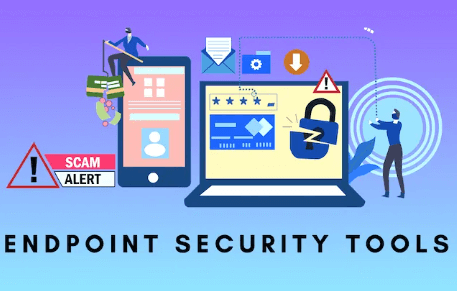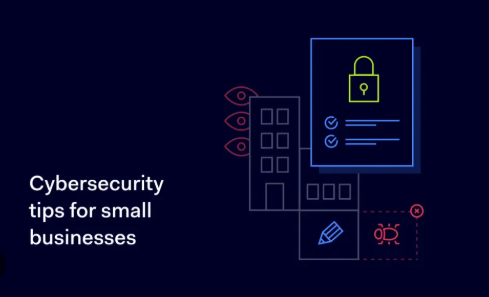Introduction
In today’s digital landscape, endpoint devices — laptops, desktops, mobile phones, servers, IoT gadgets — are often the most vulnerable gateways into an organization. Without strong protection on each endpoint, attackers can exploit software flaws, launch ransomware, steal data, or pivot deeper into networks. That’s where endpoint security tools come in: they offer protection, detection, response, and control at the device level.
This article explores the core types and capabilities of endpoint security tools, best practices for implementing them, and how to choose the right solution for your organization. You’ll also find answers to common user questions. Throughout, we’ll emphasize trust, expertise, and user-focus (E-E-A-T) to ensure you can rely on the guidance as you evaluate or deploy endpoint defenses.
What Is Endpoint Security & Why It Matters
Definition & scope
“Endpoint security” refers to the technologies, practices, and policies that secure end-user devices (endpoints) from cyber threats. These tools are also referred to as endpoint protection platforms (EPP) or endpoint detection and response (EDR) tools when they include more advanced detection and response capabilities.
Key motivations
- Expanding attack surface: More remote work, cloud usage, bring-your-device (BYOD) practices, and IoT adoption mean more endpoints. Each is a potential entry point for attackers.
- Advanced threats & zero-day attacks: Traditional antivirus is no longer enough against fileless attacks, ransomware, or unknown threats. You need real-time monitoring, behavioral analysis, and response.
- Regulatory & compliance pressures: Many industries require data protection, logging, audit trails, and incident response capabilities.
- Visibility & control: Knowing the state of each device (patch status, configuration, encryption, software versions) helps security teams manage risk proactively.
Core Types & Controls in Endpoint Security
To build a robust endpoint security posture, tools typically include combinations of the following controls and capabilities. Many modern solutions bundle several of these features into unified platforms. (These are also common LSI/related keywords you will see in this space.)
- Antivirus / Anti-Malware
The foundational layer: identify, quarantine, or remove known malicious software or signatures. Many solutions now also include heuristic or behavior-based detection beyond signature matching. - Endpoint Detection and Response (EDR)
EDR tools continuously monitor endpoint activities — process behavior, file changes, network connections — to catch suspicious behavior, alert security teams, and support investigation. - Data Encryption / Disk Encryption
Encrypting data at rest (on the device) ensures that, even if a device is stolen or compromised, data remains unreadable without proper keys. - Application Control / Whitelisting / Blacklisting
Restrict which applications can execute on an endpoint (whitelisting) or block specific risky apps (blacklisting). This reduces the chance that a rogue or unknown app can run. - Network Intrusion Detection / Prevention (IDS / IPS) on Endpoint
Some endpoint tools monitor network traffic on the device to identify suspicious patterns, unusual outbound connections, lateral movement attempts, or known exploit signatures. - Vulnerability & Patch Management
Scanning endpoints to detect missing patches or software vulnerabilities, then automatically or semi-automatically deploying updates to close those gaps. - Threat Intelligence & Indicators of Compromise (IoCs)
Integrating threat feeds or intelligence sources helps the system recognize known patterns, malware hashes, or malicious domains. - Behavioral / Anomaly Detection
Using machine learning or heuristics to spot deviations from normal activity — e.g. a process spawning an unexpected child, a file injecting into system processes, or persistent unknown registry changes. - Automated Response & Remediation
Once a threat is detected, the tool can take predefined actions: isolate the device, kill a process, block network access, roll back changes, or quarantine files. - Extended Detection & Response (XDR)
XDR is an evolution that integrates endpoint data with network, email, cloud, and identity signals into a unified detection and response plane.
The more controls a solution supports — and the tighter their integration — the stronger its defense, provided it’s well configured and managed.
Choosing an Endpoint Security Tool: Key Considerations
Selecting the right endpoint security tool for your organization is not trivial. Here are important criteria (and LSI phrases) to evaluate:
- Detection Accuracy & Coverage
Look for high true positive rates and low false positives. Independent evaluations (e.g. MITRE Engenuity tests for EDR) are useful benchmarks. - Real-time Visibility & Telemetry
The tool should offer deep insight into file, process, registry, memory, and network events on each endpoint. - Agent Overhead & Performance Impact
The security agent should not overly burden devices or interfere with user productivity. - Ease of Deployment & Scalability
Can the solution roll out across hundreds or thousands of devices with minimal disruption? Does it support remote, zero-touch deployment? - Response Capabilities
How fast and flexible are its remediation and remediation automation options? - Integration & Ecosystem Compatibility
Can it integrate with SIEM, SOAR, threat intelligence platforms, asset management, or vulnerability management systems? - Platform Support
Ensure coverage across OS types your organization uses (Windows, macOS, Linux, mobile, IoT). - Cost & Licensing Model
Understand per-endpoint costs, required add-ons, and scalability of licensing over time. - Support, Updates & Vendor Reputation
The vendor should deliver regular signature/behavior updates, threat intelligence feeds, patches, and responsive support. - Compliance & Reporting
Detailed logging and auditing are often essential for regulations like GDPR, HIPAA, PCI, etc. - User Experience & Manageability
Dashboards should clearly highlight risks; false alarms must be manageable; remote remediation should be seamless.
Real-World Examples & Use Cases
- Bitdefender Endpoint Security Tools
Bitdefender offers endpoint protection solutions with features like malware scanning, volume encryption, and command line interface control across Windows, macOS, and Linux. - Symantec Endpoint Protection
A widely used suite combining anti-malware, firewall, and intrusion prevention mechanisms. - Check Point Integrity
It offers network access controls, application control, personal firewall, and intrusion prevention at the endpoint level. - Modern RMM + Security platforms like NinjaOne
These combine endpoint management and security features like patching, monitoring, and threat detection into a unified toolset. - ThreatLocker
This newer entrant emphasizes application ringfencing, dynamic network controls, and fine-grained allow/deny policies at the endpoint.
These tools show a spectrum: some are pure EDR or EPP, others are broader platforms. The right fit depends on your security maturity and organizational needs.
Best Practices for Deployment & Ongoing Management
- Start with a risk assessment & gap analysis
Identify which endpoints are most critical, what threats you face, what tools or controls you already have, and where the blind spots are. - Use a layered approach
Don’t rely on a single control. Combine antivirus, EDR, encryption, patching, network defense, application control, and threat intelligence. - Deploy in phases & pilot testing
Roll out to a subset of endpoints first to detect compatibility or performance issues before full-scale deployment. - Define incident response playbooks
Decide ahead of time how the system should respond (e.g. isolate, kill process, alert) for different severity levels. - Tune policies & thresholds
Avoid noisy alerts by adjusting thresholds, suppressing benign events, and refining rules over time. - Continuous monitoring, review & audit
Regularly review alerts, logs, and alerts; conduct red teaming or penetration testing to validate detection capability. - Patch & update relentlessly
Ensure operating systems and applications are always up to date to minimize exploitable vulnerabilities. - User training & awareness
Educate employees about phishing, malicious downloads, USB threats, and best practices — many attacks begin with human error. - Backup and recovery readiness
Even with endpoint defenses, data backups and recovery procedures must be tested and ready. - Leverage threat intelligence & behavioral insights
Use external and internal feeds to enrich alert context and reduce dwell time.
FAQs (People Also Ask)
1. What is an endpoint security tool?
An endpoint security tool is software or a platform designed to protect devices (endpoints) like desktops, laptops, servers, or mobile devices by preventing, detecting, and responding to cyber threats at the device level.
2. How does endpoint detection and response (EDR) differ from traditional antivirus?
Traditional antivirus relies largely on known signatures to detect malware. EDR systems observe real-time endpoint behavior (e.g. file changes, process launches, network calls), detect anomalies, and enable investigation and remediation beyond just signature matching.
3. Can I manage endpoint security across Windows, macOS, and mobile devices?
Yes — many modern endpoint security tools support multiple platforms (Windows, macOS, Linux, iOS, Android, or even IoT). Always check that your tool covers all operating systems used in your organization.
4. Do endpoint security tools slow down my device?
They can, if resource consumption or scanning is too aggressive. That’s why choosing a solution with minimal overhead, efficient scanning, and smart tuning is critical.
5. Is endpoint security enough on its own?
No — endpoint security is just one layer. A robust cybersecurity posture also requires network security, identity management, cloud security, user training, and incident response planning.
Conclusion
Endpoint security tools are a critical pillar in an organization’s defense against modern cyber threats. With the proliferation of remote work, cloud systems, and IoT devices, endpoints represent some of the most exposed and vulnerable attack surfaces. However, not all endpoint tools are created equal — the most effective ones combine preventive, detective, and responsive capabilities, integrate well with your broader security ecosystem, and maintain minimal friction with user operations.
When selecting and deploying endpoint protection or EDR solutions, start from risk, pilot carefully, tune over time, and ensure you have clear response protocols. Combine endpoint controls with backups, network security, identity protection, and staff awareness to achieve defense-in-depth. By doing so, your organization can raise the bar against ransomware, malware, insider threats, and advanced persistent threats. A well-designed endpoint security strategy not only blocks attacks but empowers your security team to detect and respond swiftly — turning endpoints from weak links into fortified gateways.




